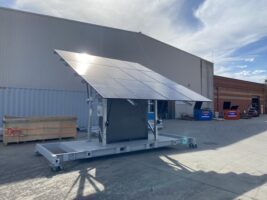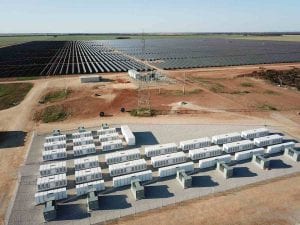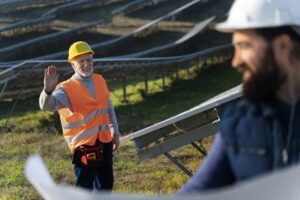It’s amazing how travel can broaden the mind!
I spent a few days in the Siberian city of Krasnoyarsk in April, on a study tour with a team from APEC, looking at low carbon urban development strategies. We were shown impressive projects such as new buildings with triple glazing and very thick insulation, plans for a light rail project and a 6,000MW hydroelectricity plant.
But, as we drove through the streets, what puzzled me was all the air conditioners I saw on buildings in a climate where the average daily top temperature in the hottest month is 25C, with overnight temperatures of 13C. I asked our guide about them. He explained that, even though summer was short, it often became unbearably hot in many apartments and offices.
Indeed, the record top temperature is over 36C but such heat is (still) rare.
 It is clear from the picture that shading is not common on the average Siberian building. It seems that, when the summer sun shines on these highly insulated buildings, they become solar ovens. And I suspect the average Siberian doesn’t think of cooling the building overnight by opening windows to flush out the heat, given that for most of the year this would add to discomfort.
It is clear from the picture that shading is not common on the average Siberian building. It seems that, when the summer sun shines on these highly insulated buildings, they become solar ovens. And I suspect the average Siberian doesn’t think of cooling the building overnight by opening windows to flush out the heat, given that for most of the year this would add to discomfort.
This reminded me of the findings of a CSIRO study of 5 star homes, which found that they saved a lot of energy in winter, but they had quite large cooling energy use. Further analysis of the CSIRO data by RMIT PhD student Nicola Willand and colleagues has also shown that 5 and 6 star rated homes in
Melbourne are warmer and less comfortable in summer than 4 star rated homes.Our building energy regulations tend to encourage designers to insulate and seal houses. But they are not stringent enough to require much focus on summer performance, at least in our heating dominated climates. So our new homes tend to become solar ovens in summer.
Experience in Siberia and elsewhere in Europe suggests that this is a global issue for housing. When we insulate, seal and install advanced glazing to improve winter performance, we make our buildings more sensitive to summer overheating. When even small amounts of solar radiation enter these homes, the building envelope traps that heat and creates discomfort.
When you think about this, it is obvious: if a building’s thermal performance is so good that a few kilowatts of heat will keep its temperature 10 to 15 degrees warmer than outdoors in winter, you won’t need much heat to make it warmer than outdoors in summer, too. And internal heat sources like halogen lamps, old plasma TVs and cooking, that reduce winter heating, add to the summer heat problem.
Effective shading (preferably adjustable) can block out this sun, and dramatically improve summer comfort. But, in most climates, present Australian building energy regulations don’t require this because they can be met by measures that improve winter performance, even if they make summer performance worse. For example, in climates like Melbourne’s, removing eaves and a black roof improve your star rating.
And my experience indicates that very few people understand how much heat energy is associated with sun shining in through windows: three square metres of unshaded glazing exposed to sun can be the equivalent of hanging a 2 kilowatt (2 bar) electric radiator on the wall and switching it on at the hottest time of day.
But how do we deal with this, especially in a warming world? We need to educate building designers and occupants about the importance of keeping summer sun out of buildings. Building energy regulations could include separate summer and winter requirements, as the NSW BASIX scheme already does – although the stringency of requirements requires updating.
It’s amazing how travel can broaden the mind!










